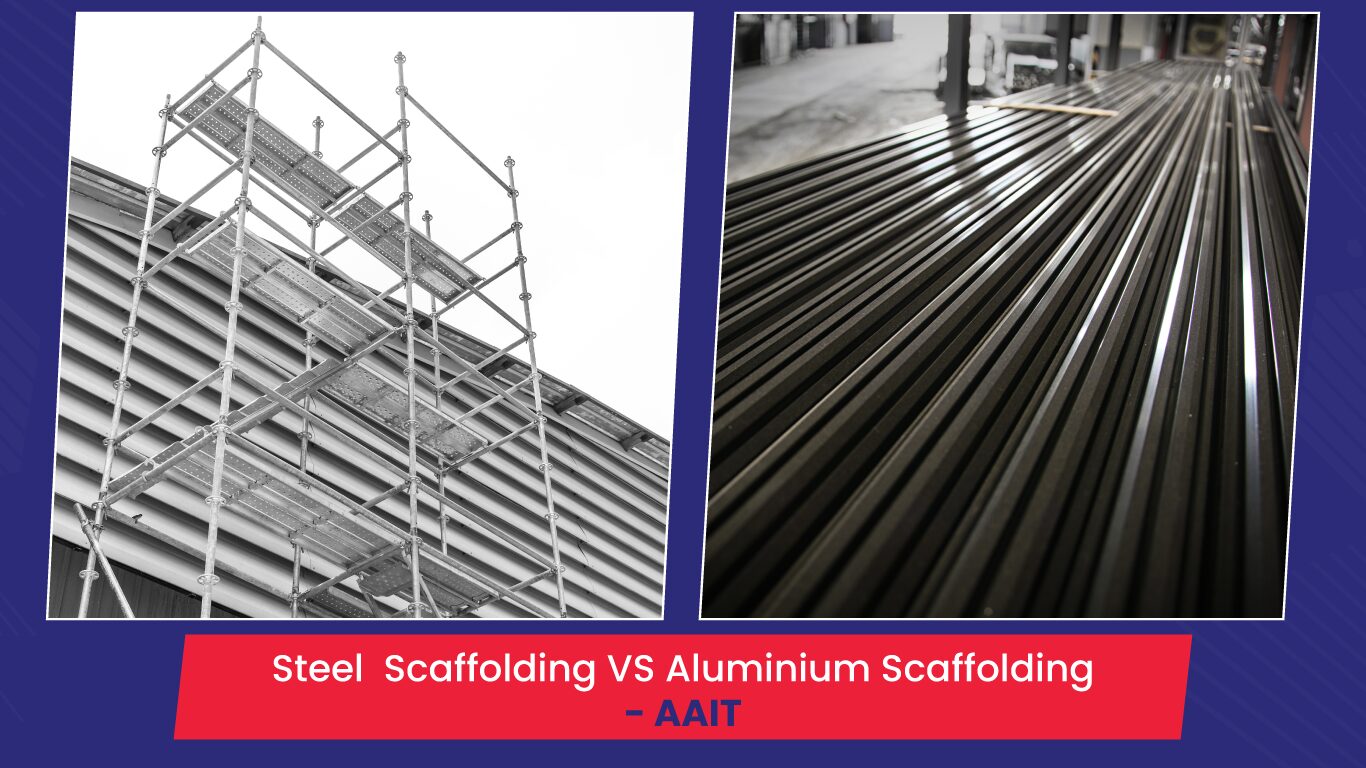When you’re moving ahead with a construction project, it can be confusing what type of scaffold you must select. But when you’re concerned about safety, you can choose between steel and aluminum scaffolds. In this article, we shall learn about steel scaffolding vs. aluminum scaffolding based on their uses. You will also know about the benefits of each scaffold.
Strength of Steel Scaffolding
For centuries, steel scaffolding has been known for its strength. Steel columns also increase strength because they transfer forces to the ground. Additionally, the horizontal bars form a lattice with the vertical columns. For additional support, workers also use transoms at every level. Couplers also enhance strength by connecting the tubes perpendicular to one another. Let’s check out whether an aluminum scaffold is strong.
Strength of Aluminum Scaffolding
Aluminum scaffolds have strength even when they are light in weight, just like steel scaffolds. This enables quick setup and reduces labor costs. Despite being light, the structure is robust and durable. It always has the capability of supporting heavy loads. In addition, properties like corrosion resistance ensure longevity even in extreme outdoor conditions. Furthermore, the entire structure is flexible in design to suit diverse project needs.
Weight of Steel Scaffolding
Compared to aluminum structures, steel scaffold components weigh from 20 to 40 kg. However, because the entire steel structure is heavy, its weight may exceed that of an aluminum scaffold. Furthermore, factors such as design and configuration can contribute to the weight difference. This nature, therefore, makes it suitable for contractors executing large construction projects.
Weight of Aluminum Scaffolding
The overall weight of these scaffolds varies depending on the configuration and design. As the metal is lighter than steel, the components weigh between 15 and 30 kg. However, once set up, a scaffolding structure can weigh several hundred kilograms. Even then, the structure’s weight will depend on the height and the width. This nature allows for easy movement of such scaffolds to various locations. This makes it ideal when workers have to carry out maintenance-related tasks.
Applications of steel scaffolding
Long-term and temporary projects typically use steel scaffolding. Workers can carry out tasks like setting up windows and laying bricks because these offer support. Apart from this, workers can use the scaffold for repair work on tall buildings. Bridges or industrial areas undergoing repairs can also utilize the scaffolding. Additionally, staging setups heavily utilize steel scaffolds. Because they are adjustable, they can serve a variety of purposes.
Applications of Aluminum Scaffolding
People often use aluminum scaffolding for various applications. These are ideal for maintenance work and construction in a residential area. Because the structure is lightweight, it’s ideal for projects that require relocation. Additionally, event planners use the scaffold structure for staging purposes. Event to their resistance to wear and tear, event planners also prefer using aluminum scaffolds. These are usable even in extreme outdoor conditions.
The advantages of steel scaffolding
When you set up steel scaffolding, it offers many benefits.
Durability
Steel scaffolding is strong and can support heavy loads. Hence, contractors can think about this scaffolding for large-scale projects.
Safety
While using steel scaffolding, workers can carry out tasks on a stable platform. This mitigates the likelihood of accidents.
Versatility
Steel scaffolds are versatile by nature. This implies that they can adapt to their specific requirements.
Cost-Effective
Even though you might have to invest a lot, steel scaffolds are cost-effective. They always last for a long time in an outdoor environment.
Easy to assemble
You can quickly set up and disassemble such scaffolds. This helps meet the timelines of construction projects.
In the end, we can build this type of scaffold to perform tasks high above ground level.
Benefits of Aluminum Scaffolding
Aluminum scaffolding offers several advantages over steel scaffolding.
Lightweight
Aluminum’s lighter weight enables easy dismantling of the components. When moving scaffolding to different locations, this is useful.
Resistance to corrosion
Aluminum components don’t wear out easily. Hence, the scaffold is ideal for construction sites. In the future, workers also don’t have to worry about maintenance.
Always Durable
Even though the scaffolding equipment suppliers’ parts are lightweight, they can withstand heavy loads. They also keep the structure stable when individuals are working.
Adjustable
Aluminum scaffolds are adjustable at any time. This allows the workers to meet the requirements easily.
Resistance to the weather
Rain or high temperatures do not deteriorate aluminum components. This makes them suitable for diverse projects.
Conclusion
Finally, you can decide on the scaffolding structure based on the project’s needs. You can also erect scaffolding depending on the individuals working at the construction site. The budget should also be considered before choosing between an aluminum and steel scaffold.
Still searching for high-quality scaffolding accessories? Get in touch with AAIT, the leading scaffolding equipment supplier based in the US.












 Download
Download
Comments are closed